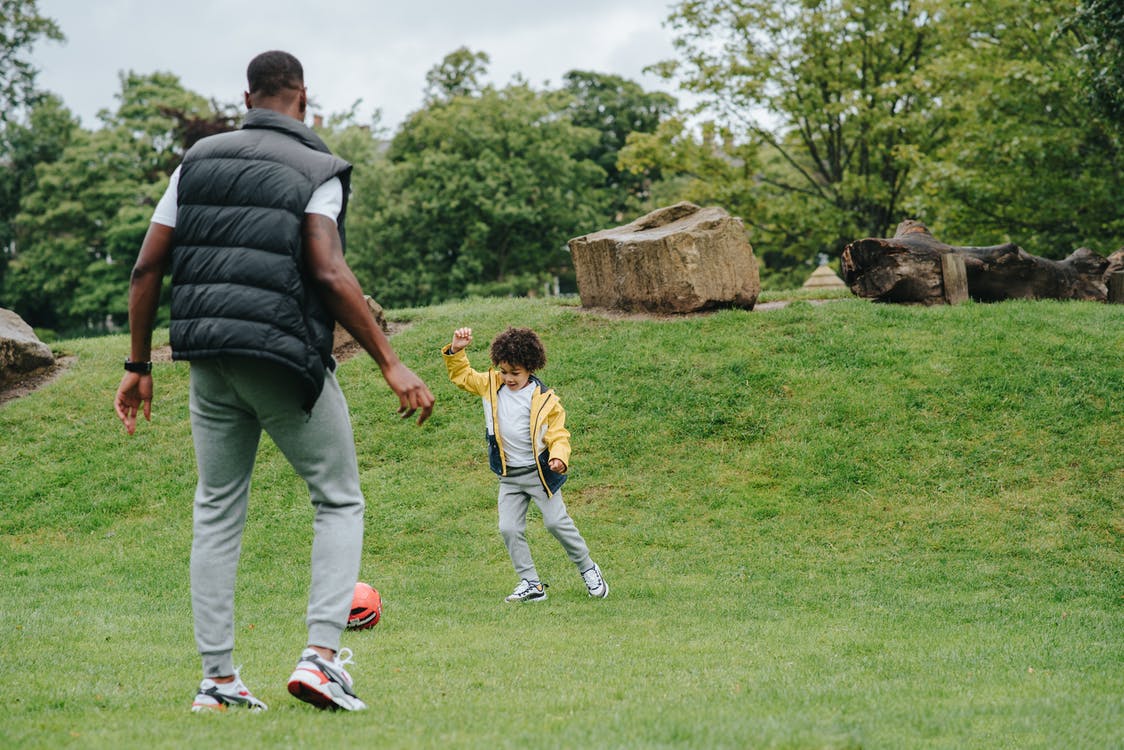One of the fundamental movement skills behind a good number of sports is kicking. From kung fu and karate to rugby and soccer, a lot of sports involve kicking. Even so, each sport takes on different techniques that correspond to the demands of the activity.
It has been recognized that soccer is the most popular sport across the globe and earns the number one spot as a participation sport among youth.
If your child shows interest in the most popular sport, you better take the cue and start teaching your kid how to kick a ball. Once they get the hang of it, they will be on their way from “kicking” a ball to curving a soccer ball like Beckham in no time—with a lot of practice, of course!
How do you kick a soccer ball?
Teaching kids how to kick a ball is not as simple as telling them to go kick the ball with a toe poke. It takes good foot control to kick the ball right without the risk of injury. Some kids develop this skill naturally, while others, usually those who struggle using both sides of their body or have low core strength, need just a bit of help to work on their body coordination to reach their kicking potential.
It is important to know that the proper kick has a variety of techniques, depending on the player’s purpose.
What are the basic kicks?
There are two basic techniques for kicking a ball. One is the push pass, also referred to as the inside-of-the-foot kick, and the other is the instep drive, also known as “the laces”—yup, laces, not the toes. Both techniques can be used to shoot on goal, but generally, the inside of the foot is used to accurately pass the ball to a teammate, and the lace drive is a powerful technique for shooting the ball.
Lock that ankle, kid!
If your child learns how to pass the ball around, your child will be ahead of the game. Determine which one is your child’s kicking foot—the left or right? Make sure that the ankle of your child’s kicking foot is locked and not floppy. The most common mistake when teaching kids how to kick a ball is an unchecked ankle. The plant foot, which is your child’s non-kicking foot, should be facing the direction where your child wants to pass the ball to. Your child must flex his or her kicking foot and point it outwards so the inside of the foot can connect with the ball—ready to kick it!
As for the laces drive technique, your child must point his or her toe down and, again, lock the ankle, so the foot doesn’t get floppy as your child connects with the ball. Of course, there are various types of shots—the chip shot, side-foot finesse shot, and bicycle kick, to name a few; but mastering the basic kicks first is important.
The most common mistake beginners make they don’t lock their ankles when they kick. This usually results in an ineffective kick and hurts the ankle.
Mind that ankle if you don’t want your child’s skills to take a nosedive!
Time to step outside and hone your child’s kicking skills!
Now that you know the basic kicks to teach your child, it’s time to practice by creating a small goal against a wall or fence. You can be part of the game as the goalkeeper. For preschoolers, you can challenge them to score goals with the correct lace kick, and you will be surprised to see them avidly engage in practicing the correct technique. After each shot, slowly roll the ball back to them and encourage them to use the side of their foot slightly raised off the ground to stop and control the ball.
We know kids get overly excited and start kicking the ball with their toes. If this happens, stop the play for a brief moment and remind them to use laces only.
Teaching older kids might require a more spacious backyard—unless you have one, you might want to consider going to a local soccer field to practice. The advantage is you will have a real goal frame!
The Takeaway
Now that your kids have kicked a ball, they might get super excited and want to go for gold and keep shooting on goal for donkey’s years! Of course, having fun is paramount in a child’s life—which should be the main reason why you want to teach your child how to kick a ball. But it is also important to teach them not to kick far with force before they have mastered the right technique on short-distance, softer passes. Being able to kick far with power is not about strength but a technique. So, try not to focus too much on free kicks; teach your little rookie-striker to pass the ball too.
The best and most fun approach to successfully teach your child some kicking skills is to simply play a lot of kicking games with them—but of course, with the right technique!

